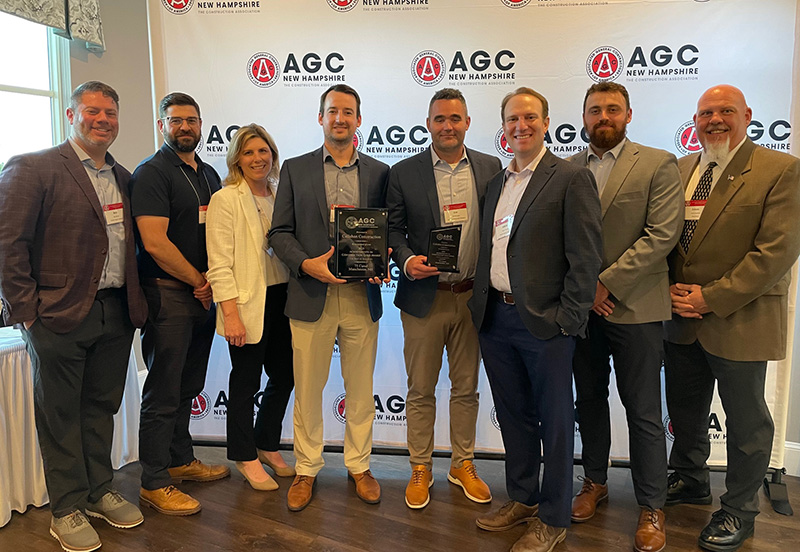News: Construction Design & Engineering
Posted: January 17, 2013
Changing construction technologies: Part 1 of 2
The newest evolution of architectural wall products (often referred to as "demountable") is changing the means and methods of construction projects, affecting the schedule, and subcontractor trades.
"Business doubled in 2012," says Spaceworks Architectural Interiors founder and president Stuart Hodas. Hodas has focused on architectural interior products since 2007.
"We were fascinated to discover that in 2012, more than 70% of our business was written through the general contractor. As we look into the rear view mirror to examine our business and see what we think is coming, we understand that educating and supporting the general contractor community is critical. Since we have historically focused on our clients, we now have to rethink our strategy and work closely with an industry who has typically viewed the demountable product market as a threat—to cost, schedule, and a successful project completion."
Why are general contractors so heavily involved all of a sudden in the provision of these products? "Clients want a primary point of contact, and as the evolution of these products continues, it becomes clearer that these products are more closely aligned with construction, rather than furniture, fixtures and equipment." This is a shift in thinking on the part of the contractor, because GCs are trained to view construction materials as generic, available from numerous suppliers, and selection of is based primarily on cost competitiveness. It's essentially providing "widgets", and there has been little opportunity to differentiate one product or provider from another.
However, the primary source of funds and receiver of the "experience" is the end user, who does not see these products as generic. Thus there has developed an inherent conflict between a client who wants to specify based on performance and aesthetics, and the contractor, who has historically assumed all of the risk including specification and procurement of appropriate product solutions per a set of contract documents.
With the advent of better products, more reliable manufacturing and availability, and wider acceptance by the design community, these products are making a big comeback. This has the potential to change the way interior construction is procured and administered.
These products, in addition to better performance and reusability, are often easier to install to finished product, since they combine the various subcontractor trades into a single company—finish carpenters, generally those that install millwork or furniture.
By using architectural wall products, construction schedules are overhauled. The walls and glass are installed after the finished floor and ceiling are complete, rather than the traditional method of drywall framing and installation before any of the finishes are installed.
From the general contractor's perspective, removing or mitigating the risk of schedule delays and product errors can translate into a better profit margin using architectural wall products as a solution. Once the product is installed, it is complete and ready to be occupied. Typically the contractor has to involve multiple trades to finish wall construction - framers, drywallers, carpenters, painters, glazers, and sometimes other specialty contractors. Demountable products are installed by a single company of finish carpenters.
* part 2 will appear in the
February 15 edition *
Lori Stewart Coletti is the president of Big Bark Solutions, Boston.
MORE FROM Construction Design & Engineering
Nobis Group awards Robinson and Moreira STEM scholarships
Concord, NH Nobis Group, a 100% employee-owned consulting firm specializing in engineering and environmental solutions across the Northeast, has named the recipients of its 2025 STEM Scholarship: Andie Moreira of
Columns and Thought Leadership

Careers in Construction Month focus on training and safety - by Joe Camilo
October is Careers in Construction Month, and rarely has it been more consequential. According to our chapter’s national parent organization, the construction industry needs to attract half-a-million new workers in the coming year to meet demand. Addressing that need is a huge job, but we at ABC MA are trying to do our part.

The design-build advantage: Integrated interior design solutions - by Parker Snyder
When it comes to corporate interior spaces for both commercial and industrial projects, partnering with a design-build firm with in-house interior design services can offer clients many benefits. Unlike traditional delivery methods where interior designers operate independently from the design and construction teams, often creating a longer project timeline as cost negotiations and revisions ensue

The rise of incubators and co-working spaces: The latest in life sciences - by Matt Combs
In recent years, the life science industry has witnessed a shift in how companies operate and innovate. One of the key driving forces behind this transformation is the emergence of incubators and co-working spaces specifically tailored to meet the unique budget and schedule needs of startups.

Ask the Electrician: Is summer a prime time for commercial electrical maintenance?
The answer is “Yes!” While January marks the official new year, many businesses view September as a fresh start. This makes summer an ideal time for commercial property owners to schedule long-term electrical maintenance projects.








